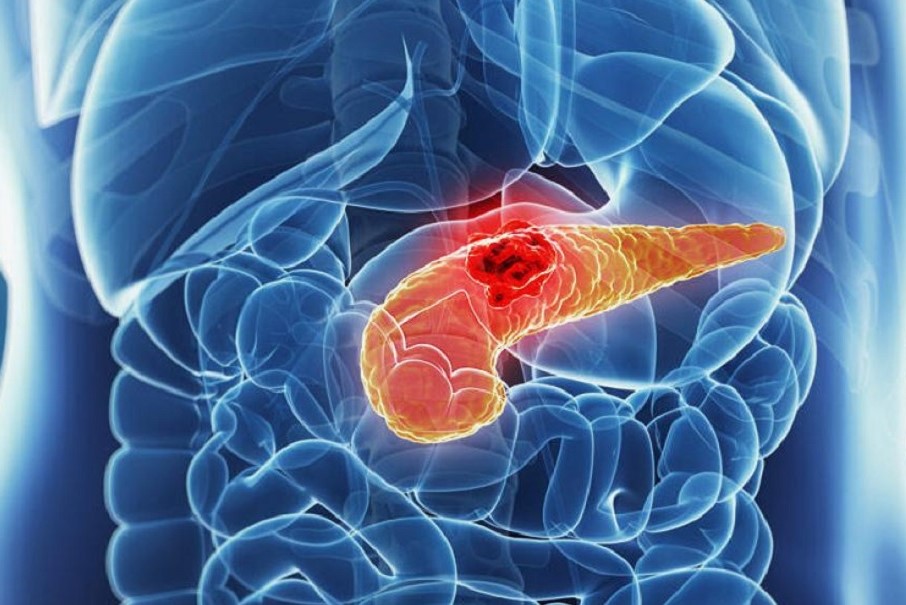
What is pancreatitis and what are the symptoms?
Pancreatitis can be acute or chronic. How can these two forms of the disease be recognised and treated?
Pancreatitis is an inflammation of the pancreas which can be diagnosed in two distinct stages:
- acute pancreatitis
- chronic pancreatitis.
Both are increasing diseases.
Acute pancreatitis is the third most frequent cause of emergency room admissions among digestive diseases and chronic pancreatitis affects at least 50 people per 100,000 in Italy.
Acute pancreatitis
Acute pancreatitis occurs suddenly and may be
- mild (90% of cases)
- severe (the remaining 10%).
Symptoms of acute pancreatitis
Acute pancreatitis presents with a variable clinical picture, but the hallmark is sudden, violent abdominal pain, which appears predominantly in the upper abdomen (‘barrage’ pain) but can also spread to the back (‘belt’ pain).
In addition to pain, there may be:
- nausea;
- vomiting;
- fever.
The patient with these sudden and violent symptoms almost always goes to the emergency room where, with the help of blood tests and radiological examinations, the diagnosis of acute pancreatitis is made.
Severe acute pancreatitis
In severe forms, however, during hospitalisation, acute p. may evolve into:
- renal and respiratory failure
- septicaemia;
- shock.
It is important that the specialist promptly recognises the level of severity of the acute condition in order to intervene as quickly as possible and in the most appropriate way.
Causes of acute pancreatitis
In 90% of cases, the causes of acute pancreatitis are:
- biliary stones, which are even more common in women;
- alcohol abuse.
The remaining cases are caused by
- very high levels of triglycerides in the blood;
- hereditary genetic mutations;
- anatomical abnormalities;
- intake of certain drugs or other ‘toxic’ substances;
- benign or malignant tumours;
- autoimmune damage to the pancreas.
Diagnosis
The diagnosis of acute p. requires by definition the presence of at least 2 of these elements:
- typical pain, as per described symptoms
- altered blood tests, with amylase or lipase values at least 3 times higher than normal;
- signs of inflammation of the pancreas on an ultrasound or CT scan of the abdomen.
Treatment for acute pancreatitis
In most cases, acute p. resolves on its own in 7-15 days.
Therapy is supportive with
- intravenous fluid infusion, especially in the first few hours;
- painkillers;
- nutritional support, when it is not possible to feed by mouth within a few days.
For more severe forms of acute pancreatitis, however, it is often necessary to support organ function with oxygen or other measures, or to administer other drugs, e.g. antibiotics, for complete resolution of complications.
Cases requiring surgery are rare, and nowadays any complications (such as the appearance of infected or uninfected fluid collections requiring drainage) are also treated endoscopically or radiologically.
In any case, to avoid recurrence, it is essential to identify the cause and remove it. In the case of acute pancreatitis caused by gallstones, the gallbladder is removed surgically.
Chronic pancreatitis
Compared to the acute form, chronic p. has more nuanced or subtle symptoms and signs, and can sometimes be asymptomatic, causing no discomfort to the patient, or paucisymptomatic, with few symptoms.
The symptoms
The symptoms and signs of chronic p. are:
- chronic abdominal pain, varying in intensity and duration, with recrudescence, i.e. attacks that can last from several hours to days; it occurs most often after meals and the site is similar to that of acute pancreatitis;
- poor digestion of food, due to a reduction in the amount of digestive enzymes present in the pancreatic juice that do not allow food to be properly digested and absorbed; this can also cause diarrhoea with loss of fat, malnutrition and weight loss;
- diabetes, caused by a decrease in the production of insulin, a hormone produced by the pancreas that regulates blood sugar levels, which is responsible for diabetes.
The causes
Chronic p., in most cases, is caused by chronic alcohol abuse and cigarette smoking, which is a risk factor for the onset of both forms and for the progression of chronic pancreatitis over time.
In some cases, chronic pancreatitis is due to repeated episodes of acute pancreatitis and, in rare cases, to
- hereditary genetic mutations
- obstruction of the pancreatic duct by benign or malignant neoplasms.
Diagnosis
Chronic p. is mainly diagnosed by radiological examinations:
- ultrasound, CT scan and/or MRI (Magnetic Resonance Imaging);
- ecoendoscopy, which enables even the mildest and least recognisable forms to be diagnosed;
- blood and stool tests are useful in defining the presence of pancreatic ‘malfunctioning’ and its consequences.
It is also useful to remember that, in this form, complications linked to malnutrition must be actively sought, which can in turn cause further health problems. Suffice it to say that one third of patients with chronic pancreatitis develop osteoporosis, even if they are male and young,’ Capurso reports.
How to treat chronic pancreatitis
For its treatment, several modalities of intervention are possible:
- lifestyle modification, by eliminating alcohol and cigarette consumption;
- pain control by taking painkillers;
- taking pancreatic enzyme supplements;
- managing diabetes by taking medication.
In addition, in many cases to treat complications of the disease, it is necessary to resort to:
- invasive and complex endoscopic treatments by means of Endoscopic Echo-Endoscopy and Endoscopic Retrograde Pancreatography (ERCP);
- surgical interventions.
Read Also:
Gestational Diabetes, What It Is And How To Deal With It
Pancreatic Cancer, A New Pharmacological Approach To Reduce Its Progression


